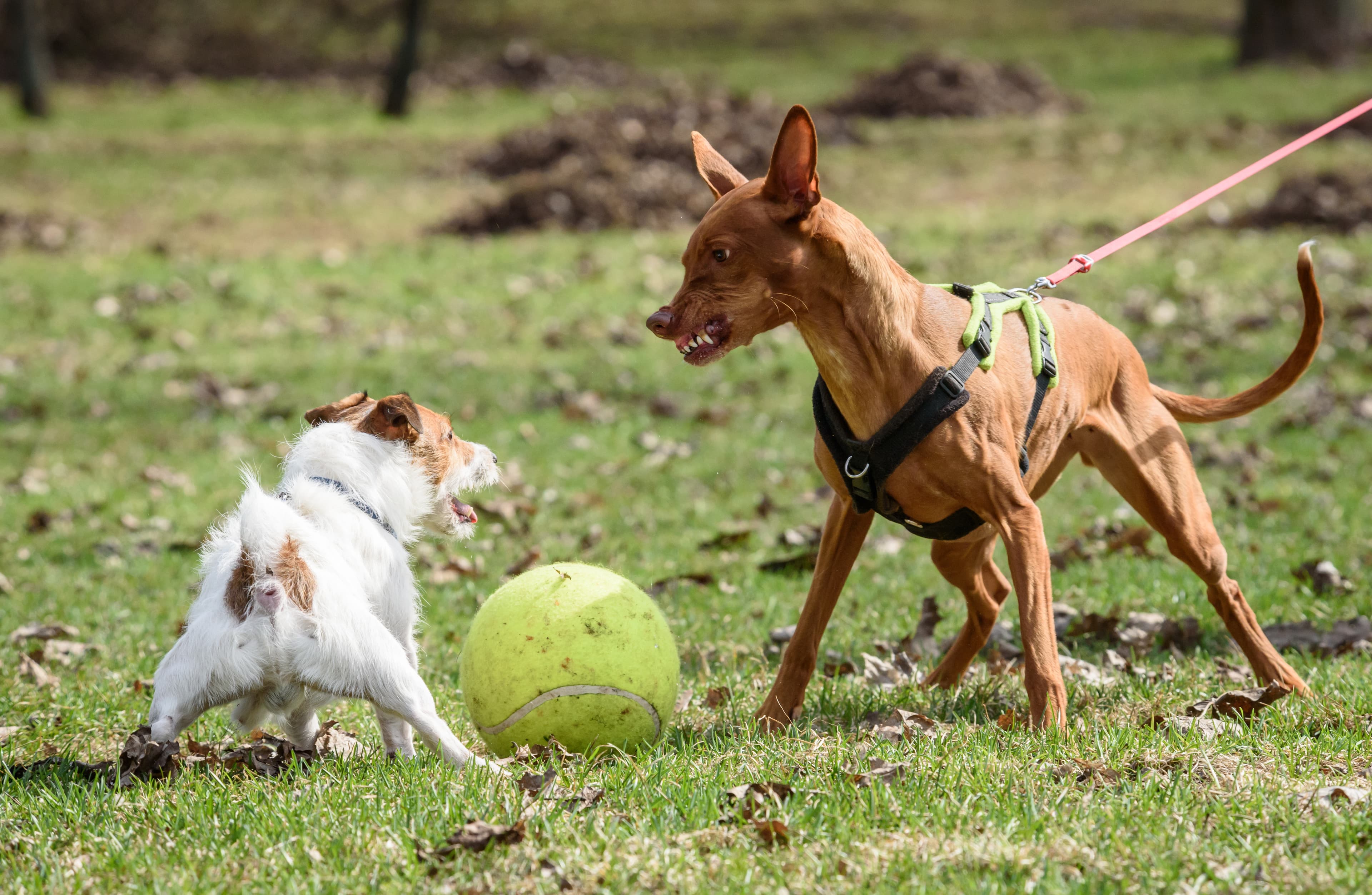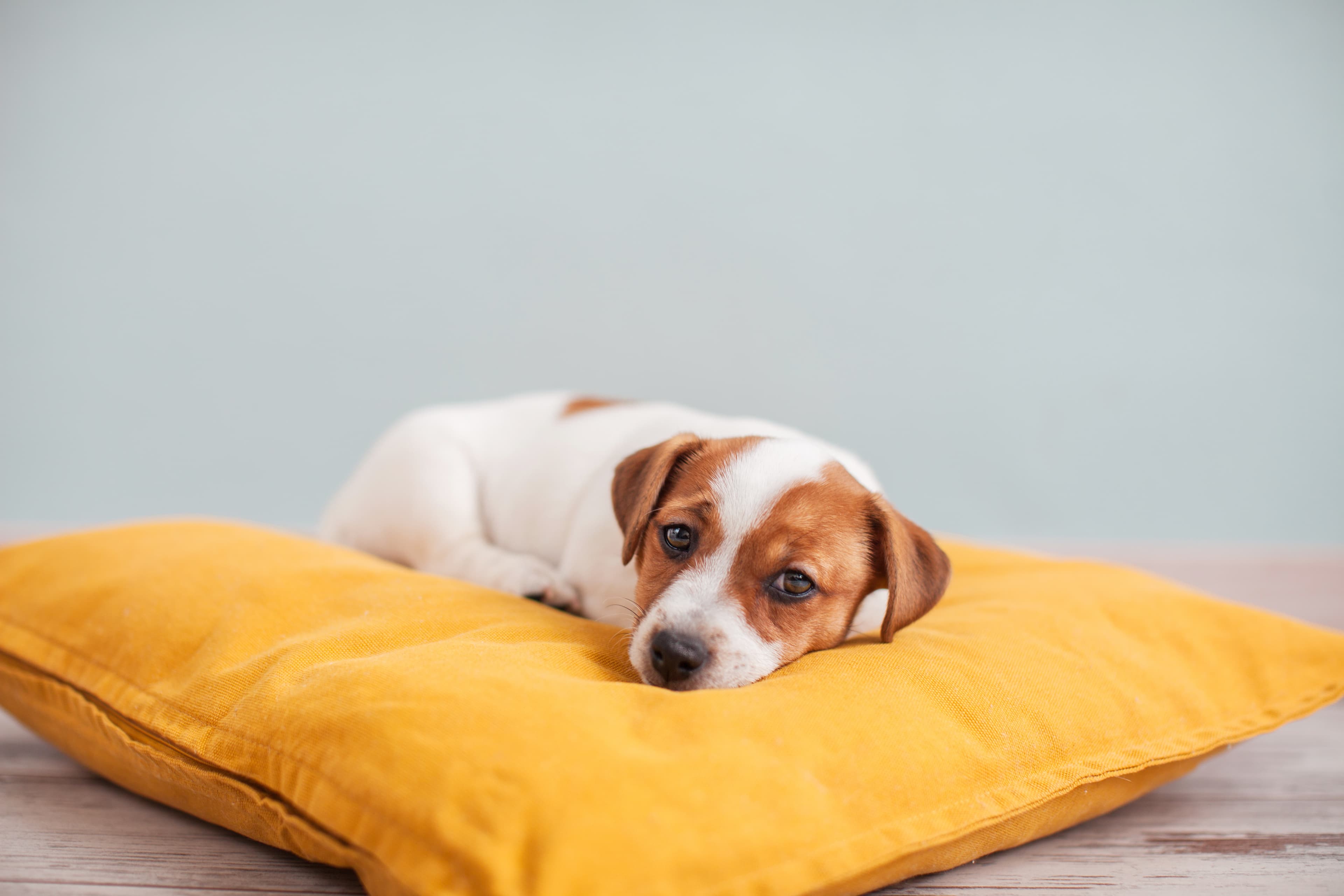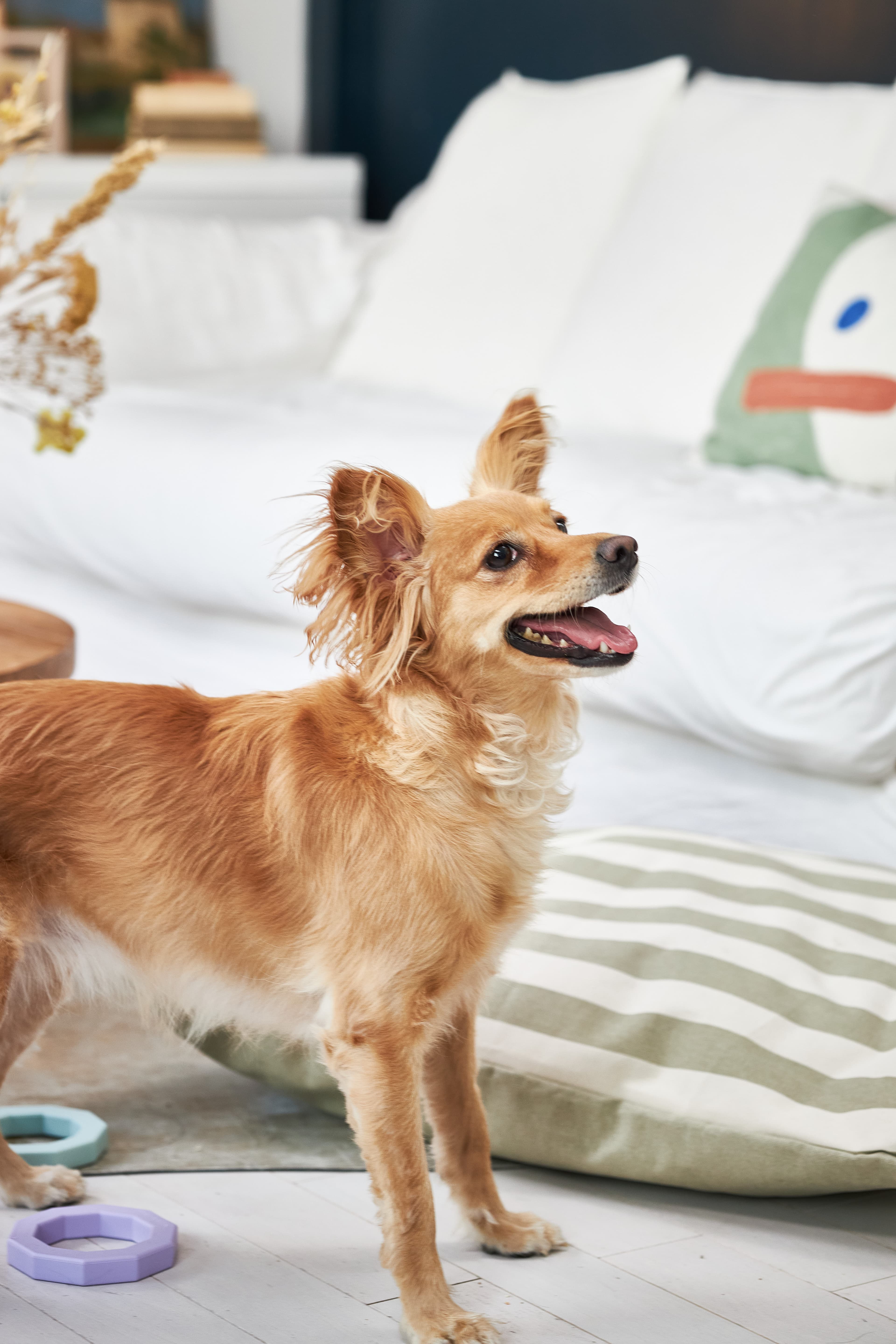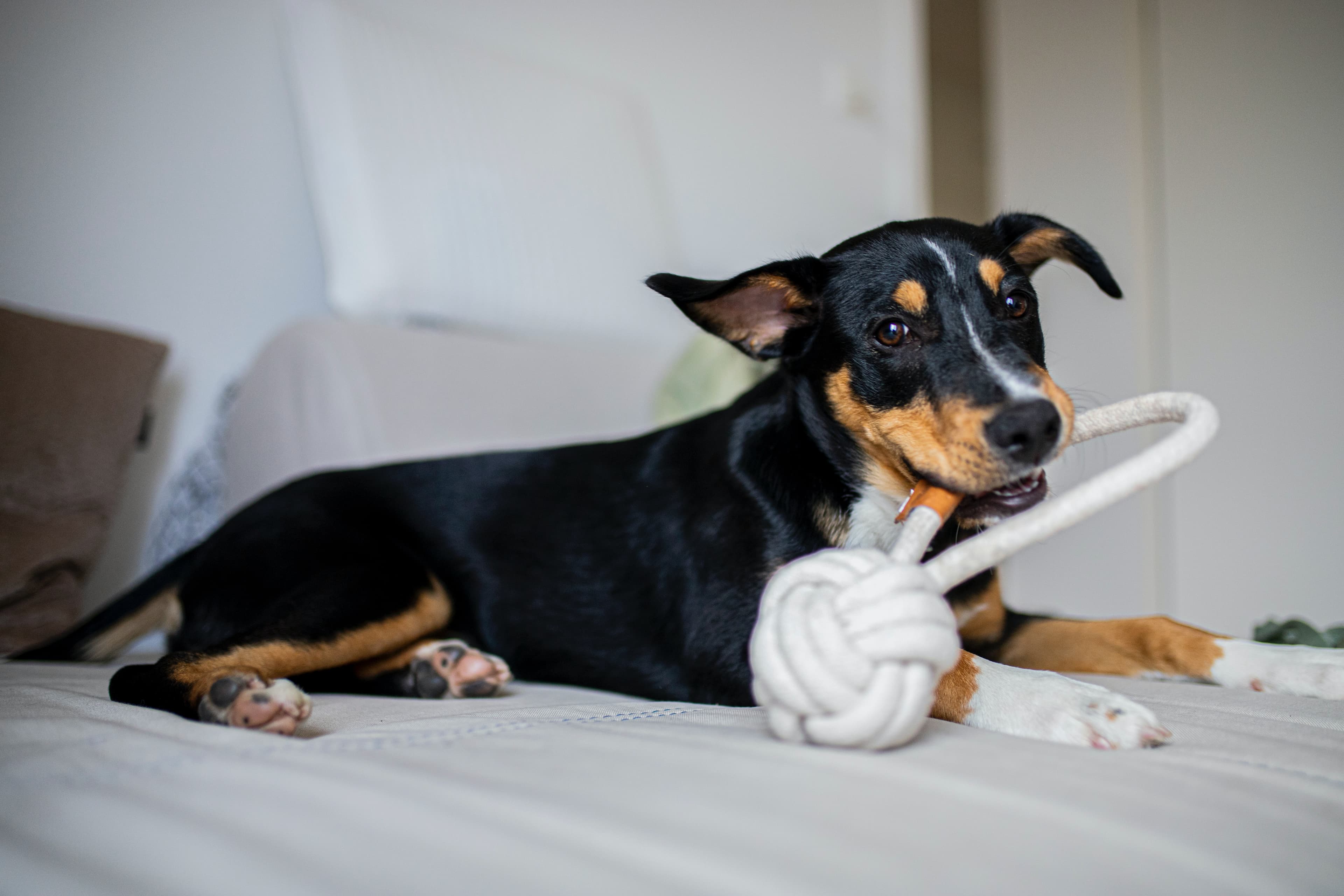What to do if your dog gets into a dogfight
Why do dogs get into fights?
There are many reasons why dogs get into fights. The fact that the dog is in pain can make them react more strongly and want to protect themselves. Another common reason is that the dog is defending its toy or food, also known as resource defence, because it wants to be left alone. Another reason for dog fighting can be when dogs are playing and one of the dogs refuses to play while the other dog does not listen, when the patience of the dog refusing to play runs out, harsher confrontation can occur.
In addition to resource defence, limited space is also a major cause of dog fights. When our dogs do not take the distance to another dog by themselves, they have no other strategies to resort to besides defending themselves. Leashes are also a reason dogs get into fights. They simply can't get their distance and dogs are usually very good at resolving conflicts at a very long distance.
Avoid fighting and resource defence
One thing you can do to avoid fights is to be careful about the dogs your dog associates with. It is best to have a few canine friends who often play together. If you let your dog loose with unfamiliar dogs in a dog park, for example, you should keep an extra eye on your dog; if you feel there is tension, you should call your dog in and walk away. Even if your dog is friendly, it is impossible to know how the other dogs in the yard might react.
Remember that both resource defence and tense situations between dogs are much greater when they are allowed to meet in a confined space or when they are on a lead. Therefore, do not allow your dog to greet other dogs on a leash or for the first time indoors or in a dog park. Their body language, the choice to distance themselves, is limited and makes dog fights much more triggering. I they don't escape the situation is the only way to confront. We want the dog to choose the strategy of distancing instead. Help your dog with that.
When it comes to resource defense, it can be helpful to remove things that can trigger a fight, such as toys, chewing bones, etc. We can also see resource defense when dogs want to defend their food, water bowl or owner.
When your dog gets into a fight
In the unfortunate event that your dog gets into a fight, you should consider your own safety first. You should never try to spread your hands over dogs, no matter how much you want to protect your dog. If you do this, you put yourself in great danger and risk serious injury yourself. What you can do, however, is try to distract and divert by making loud noises or throwing water at the dogs, for example.
If one of the dogs gets a firm grip with its mouth and won't let go of the other dog. Do not try to pull the dog away, but wait for the dog to make a turn and then remove the dog. Trying to rip the dog's teeth away from the other dog can cause enormous damage.
After a dog fight
If your dog is injured after a fight with another dog, if possible get contact details from the owner so you can keep in touch. Dog owners in Sweden have a strict dog owner's liability which means that you, as the dog owner, are responsible for any injuries your dog causes.
After a fight, the dog may be obviously injured, in which case you should take it straight to a vet. Call the vet when you are on your way so that the clinic has time to prepare. Obvious injuries may mean that the dog has difficulty walking or standing, appears to be in great pain, is difficult to get in touch with or is bleeding profusely. If your dog is bleeding heavily, you can wrap the injured part of the body with a bandage, and also put something clean against the wound under the bandage. Try to keep the dog as still as possible, carrying it to the car if possible.
Even if you don't feel your dog is affected after a fight, you should at least feel the dog's whole body for any wounds. If your dog has a wound more than a few millimetres deep that has penetrated the skin, you need to see a vet. Deep bite wounds that are not dealt with quickly become easily infected, if you suspect a wound has penetrated the skin, contact a vet for advice straight away.
If your dog has a smaller, superficial wound that does not penetrate the skin, it is often enough to keep the wound clean with soap and water, but make sure that your dog cannot lick it, so use a collar. It may be a good idea to trim or shave off the fur in the area. If the wound swells or becomes persistent, you will need to make an appointment with a vet for help. If you're unsure how to care for your dog with a minor, superficial wound, we recommend contacting digital vet, which you have unlimited access to as a Lassie insurance customer.






